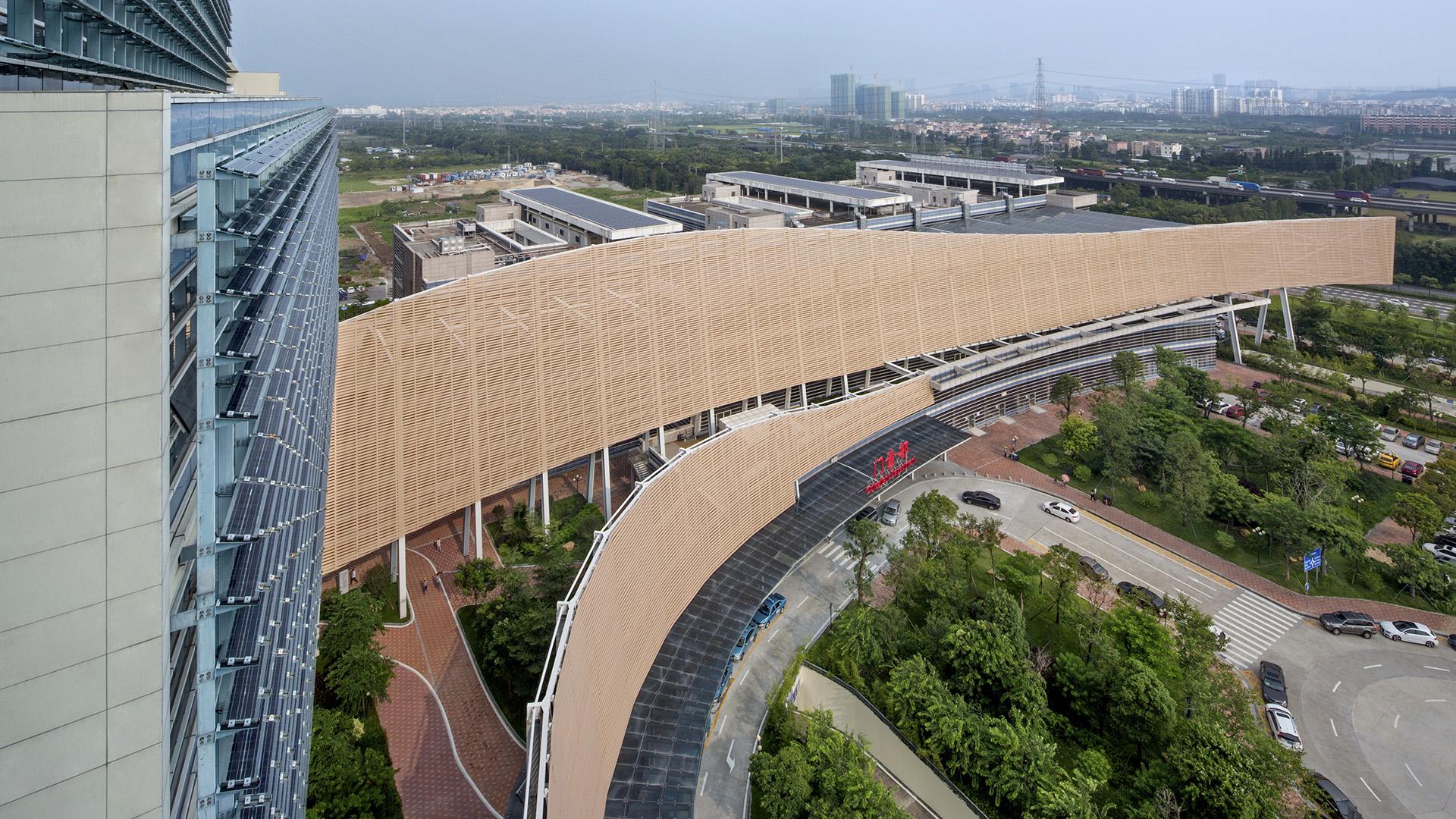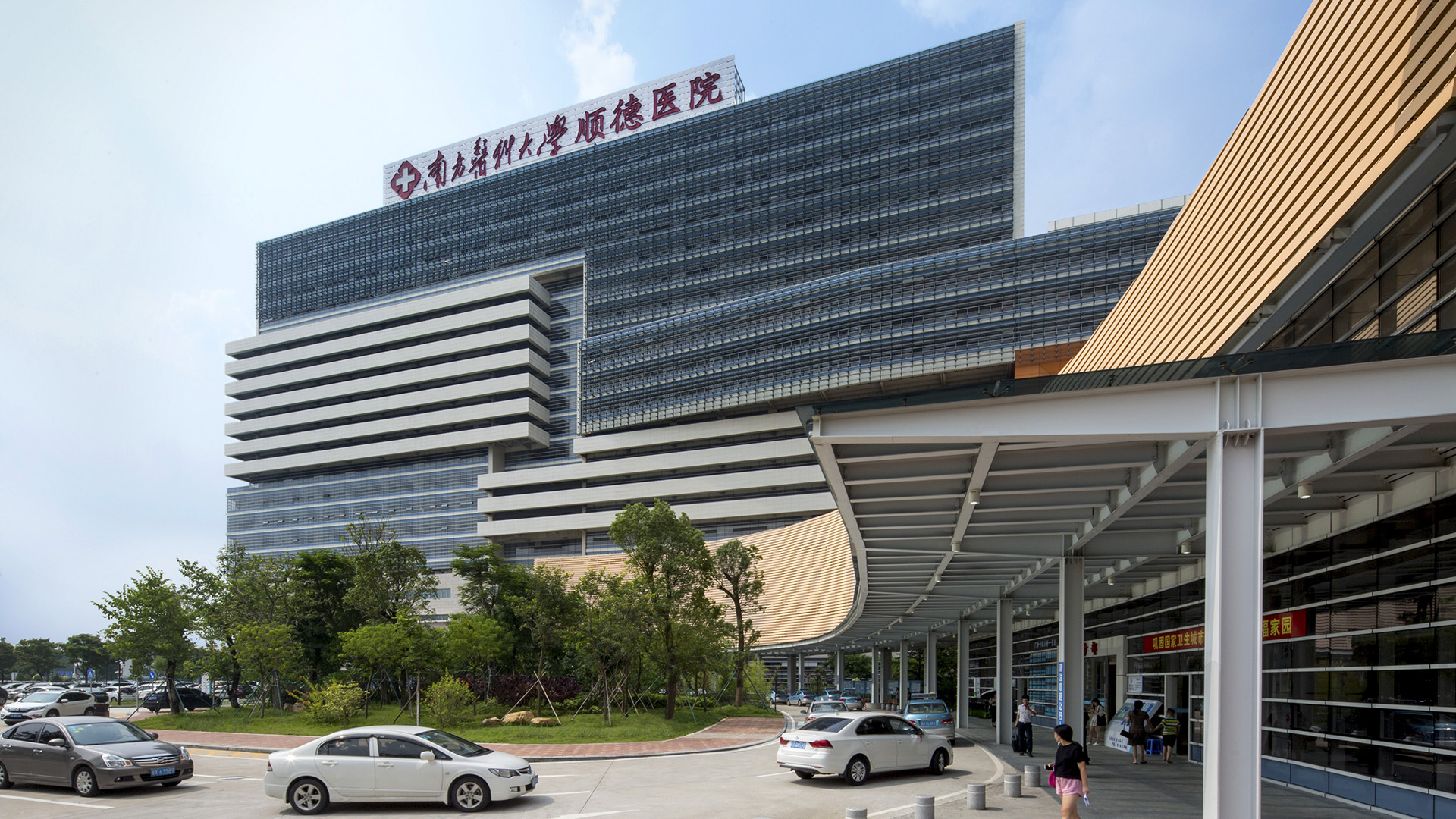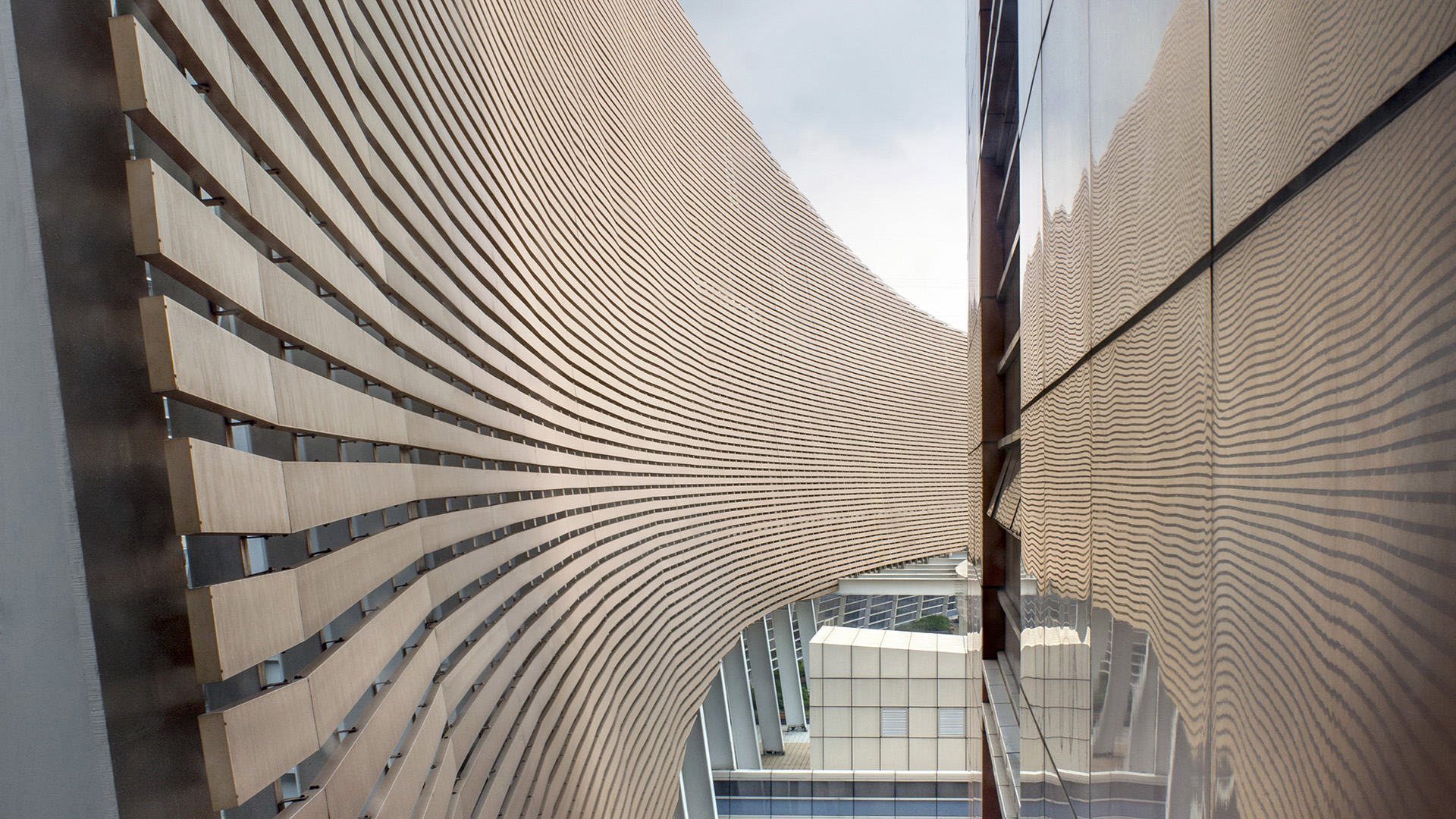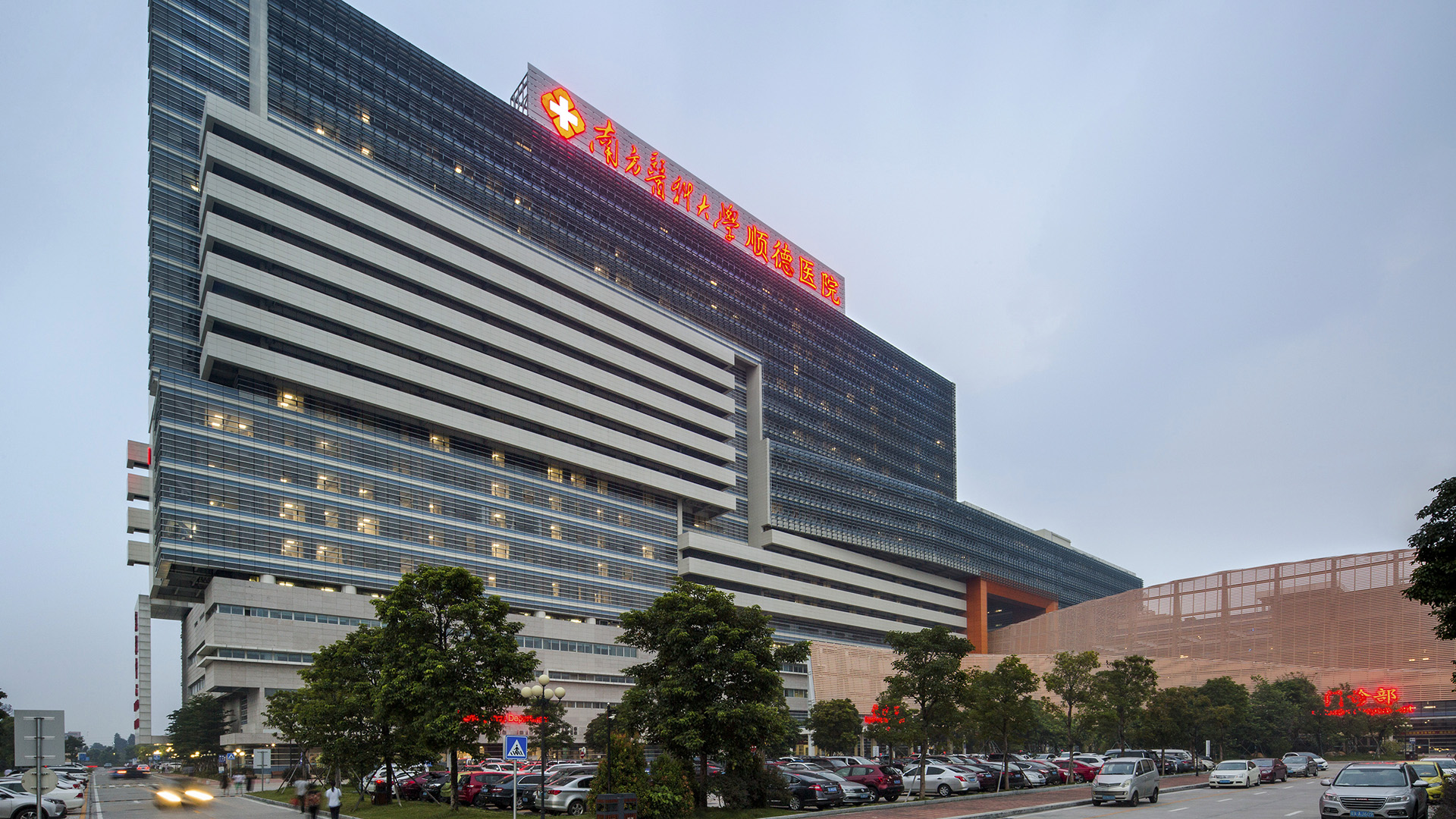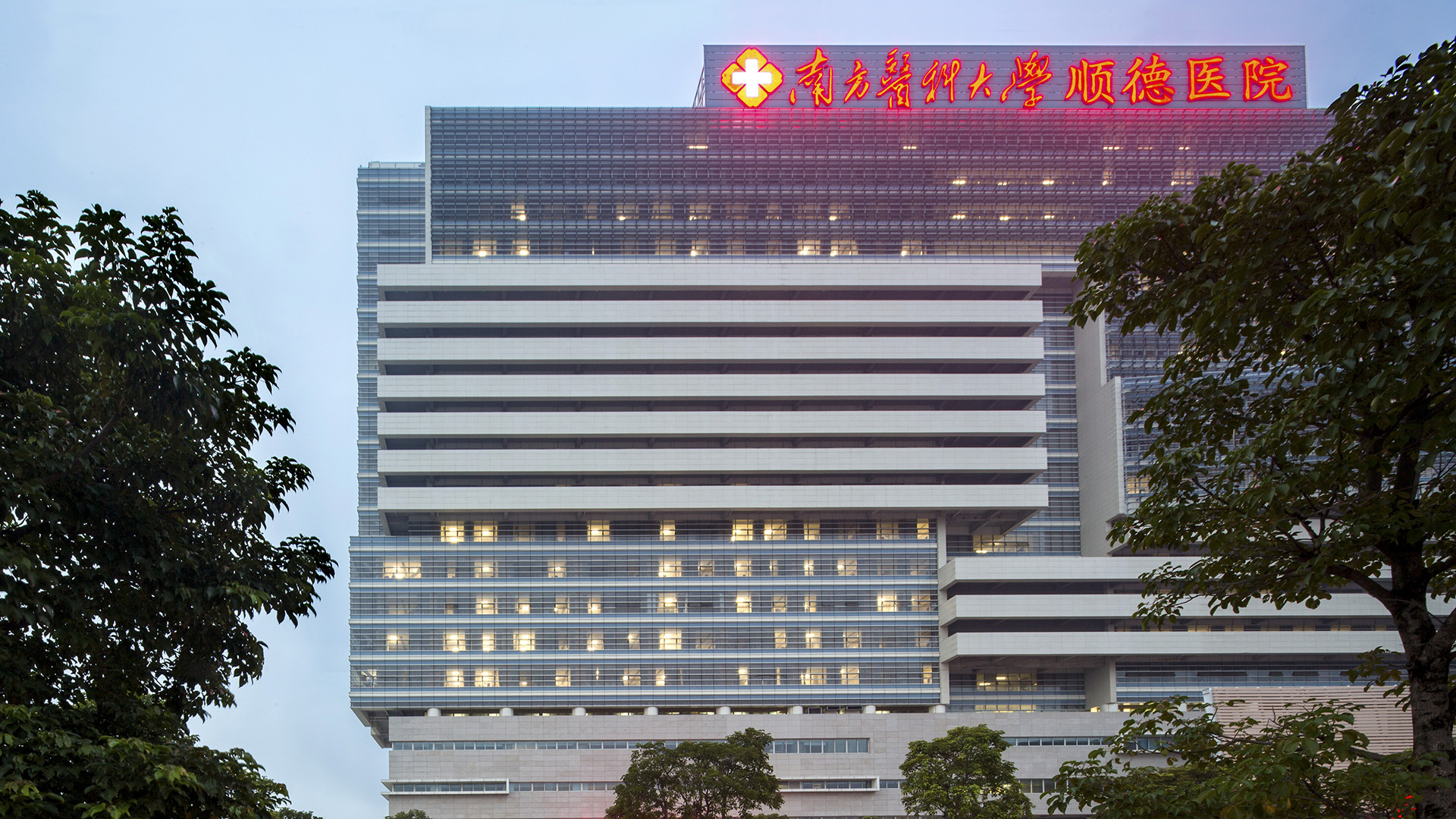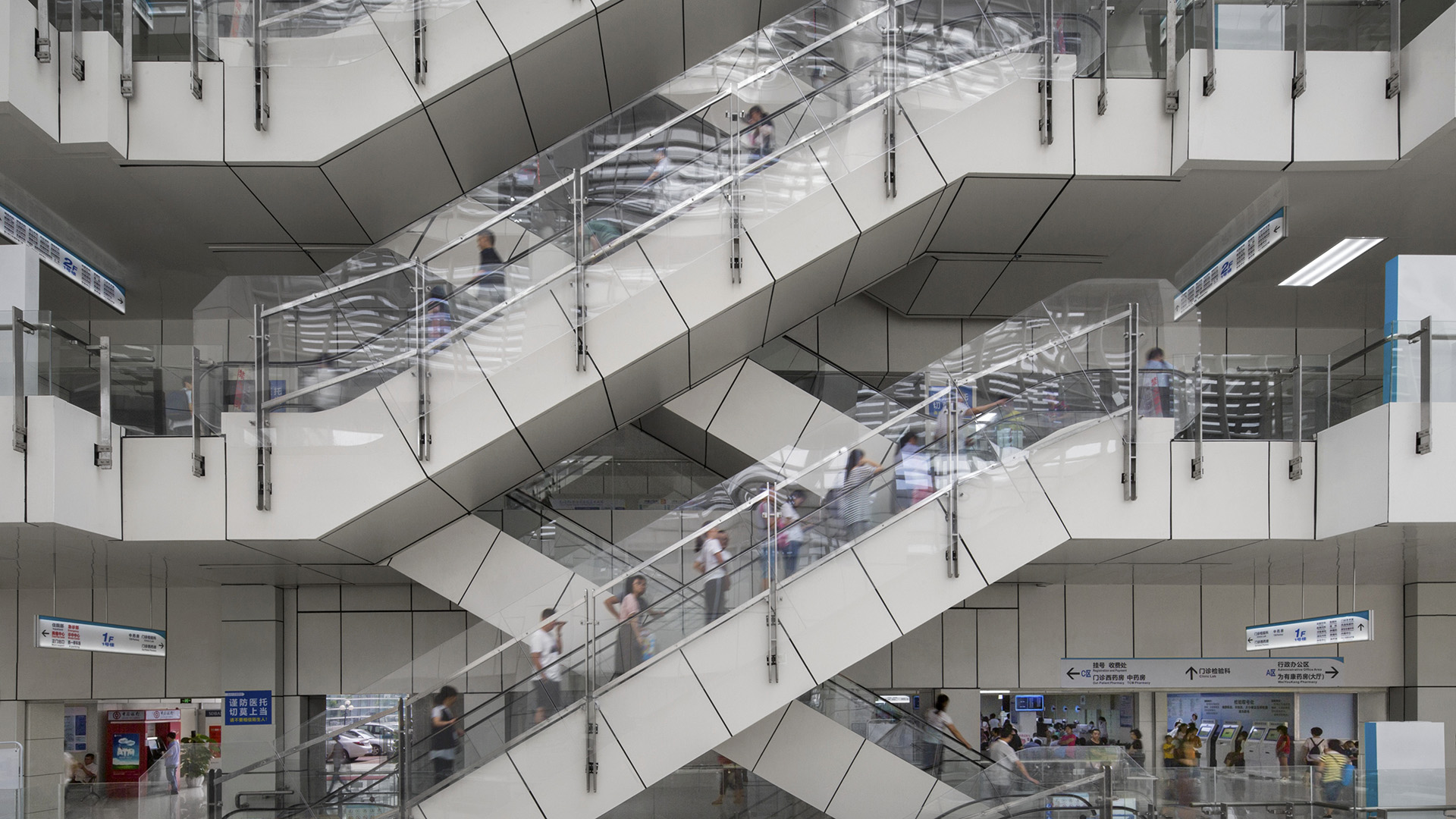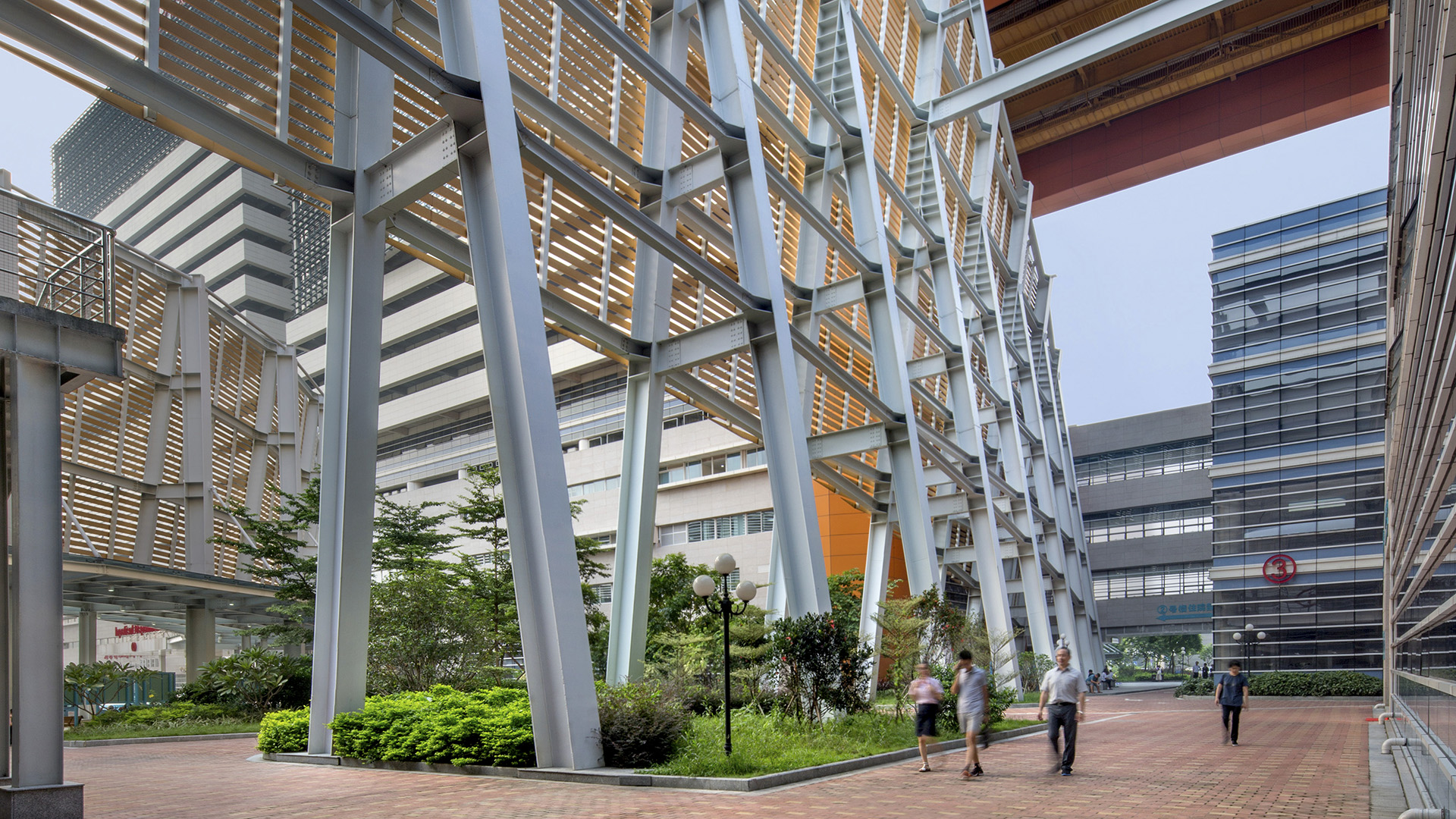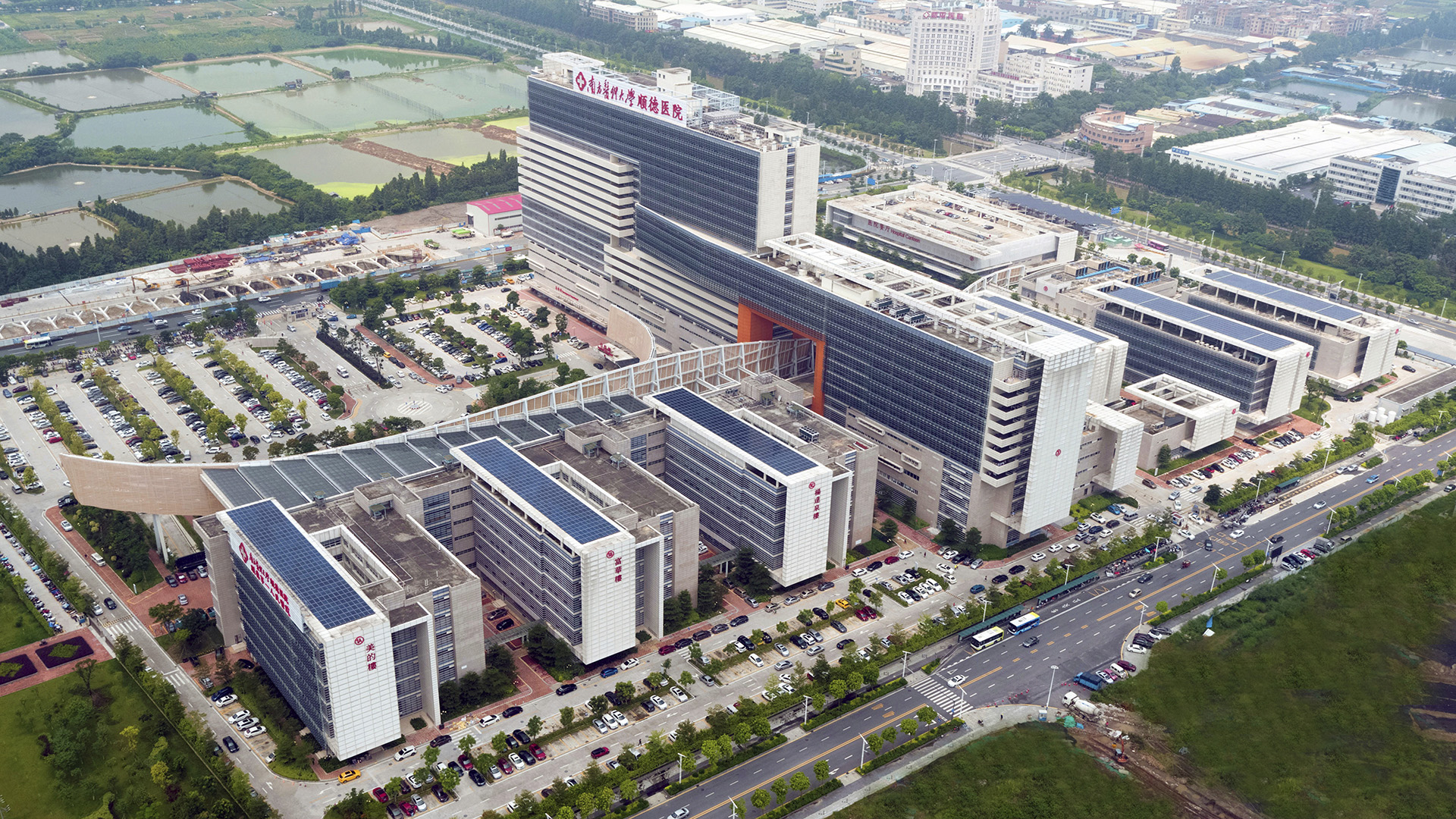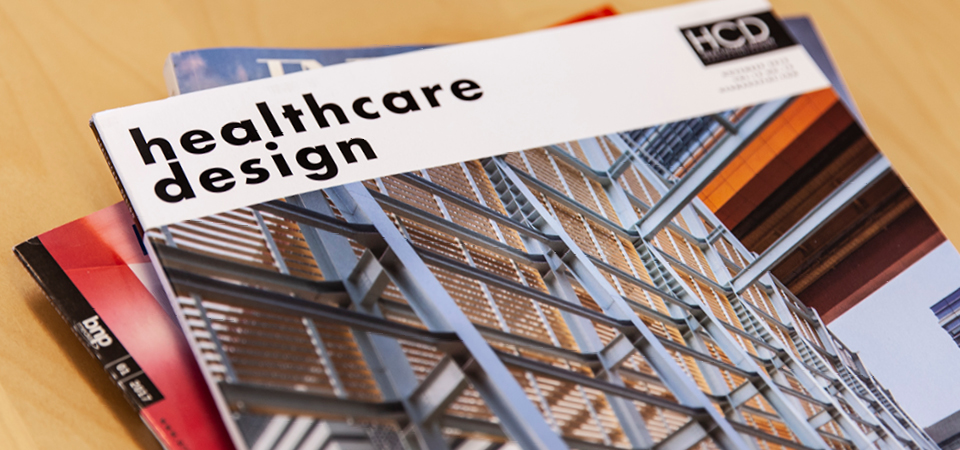Using a myriad of integrated sustainable design strategies, Shunde Hospital of Southern Medical University was designated as the official pilot green hospital for development of China’s green guide for hospital design. HMC was awarded the contract through an international design competition that posed the challenge to design a hospital that combined Western healthcare innovations with local Chinese practices. The design was also influenced by the outbreak of severe acute respiratory syndrome (SARS) from 2002 to 2003 that left a profound mark on southern China, where the disease affected thousands of people and killed hundreds. The crisis forced major policy changes to respond better to emergencies and has influenced new hospital design in the region.
The colossal three-million square foot hospital was completed in late 2017, and features the latest infection control measures and the ability to handle a large influx of patients. The teaching hospital for the preeminent medical school consists of a 2,000-bed inpatient tower, outpatient ambulatory care center, cancer center, and medical research and infectious disease buildings. Using sustainable design strategies to optimize the hospital’s building performance was a relatively new concept for the entire region’s medical centers.
Our solution organizes a series of buildings around a dynamic, curved spine to create an “eco-atrium” that has the capacity to handle 6,000 outpatient visits per day while minimizing infection risks. To address cooling needs, air is dehumidified through natural ventilation, stack effect and chilled beams, vastly exceeding local energy regulations by more than 60 percent. In addition to solar fins, the hospital’s facade incorporates one of the largest installations of Building Integrated Photovoltaic Systems in China, which reduces the facility’s overall energy consumption. With a public plaza that celebrates Shunde’s tradition of waterways and terracotta manufacturing, the result is an open, welcoming, green space that the surrounding community can use. With the design’s innovative approach to create a sustainable micro-climatic condition, the hospital’s energy performance exceeded local energy regulations. The project was recognized with a national AIA American College of Healthcare Architects (ACHA) design award (unbuilt) in 2011, and was featured on the cover of Healthcare Design magazine’s November 2018 issue.
